I, Judas Read online
Page 12
Gate shook his head. “No reason. He just seems off. More off than the rest of us.” He glanced at Angelique. “How’d you get picked?”
“I’m half Kaiyapo. I’ve spent almost all my life in this area.”
“That doesn’t explain why the Brotherhood picked you,” Gates said.
“The church saved my life, and I vowed to do anything to pay back my blood debt.”
“’Blood debt?’”
“It’s from the Kaiyapo. When someone saves your life, you then owe your life to them.” Angelique looked up the river. “I was found in the jungle by the Kaiyapo when I was two. No one knows about my parents. Where I came from. They took me in. And then the priest found me and educated me. Fed me. Gave me shelter. Made my life.” Angelique shifted her gaze from the river to Gates. “So that is why I am here, Captain. To pay my blood debt and serve God. Why are you here?”
“To pay my own blood debt,” Gates said. “Seems like you owe the Kaiyapo more than the church.”
Angelique said nothing, waiting for him to ask the inevitable question as to why she was wandering about alone in the jungle at two-years-old.
But Gates bypassed that. “Why are we taking two days to travel somewhere that should only take a day?”
“The Devil’s Gorge is difficult to—”
“Come on,” Gates said. “We could chopper there and fast rope in. The Brotherhood could hire the entire damn Brazilian Air Force to give us cover. And a little over a hundred kilometers on the river, even negotiating this Gorge, should be done in a day in those boats.”
Angelique looked at the soldier. His eyes held a darkness, a sadness that seemed to echo into some dark pit in his mind. “Father DiSalvo ordered for it to take two days.”
“So we’ll take two days,” Gate said. “Arrive on the last day.” He looked up-river. “I wonder what we’re really supposed to do when we get to Judas.”
Angelique drew him back from the future to their present. “Here come the others.”
DiSalvo was in the lead, dressed in plain green jungle fatigues, festooned with weapons, looking like anything but a priest. Kopec followed with the metal case handcuffed to his wrist and the SATCOM radio in a pack on his back. Behind him was Hyland, a battered leather pack on her back, a climbing rope tied off on one side, her sub-machinegun awkwardly slung over one shoulder, and a pistol riding uncomfortably on one long thigh. And last was Dr. Lee, looking decidedly out of place, a field medical kit on his back.
“I see you are anxious to get going,” DiSalvo said as he walked onto the pier.
Neither responded, not that DiSalvo was expecting anyone to. He pointed as he broke up the group. “Boat one will be me, Angelique and Kopec. Boat two, Gates, Hyland and Lee. Let’s get moving.”
“Test fire first,” Gates said. “Toss your gear into the boats, then form a line here.”
They did as instructed.
Gates stood in front. “Father, you said you know how to handle a weapon?”
“I do,” DiSalvo said.
Gates looked at Angelique. She tapped the stock of her shotgun and he nodded. “All right. Doctor Lee, Professor Hyland and Mister Kopec. Do as I do.”
Gates talked them through the proper firing stances for both the sub-machinegun and the pistol. Then he had each fire off an entire magazine, shot by shot. “Don’t use the automatic fire selection on the MP-five,” Gates added. “It’s a waste of bullets. One bullet can do the job. When it hits, put a second one into the head of whatever it is you want to kill. Be it a person, a snake, or a jaguar.”
“And a man who is not a man?” Angelique asked.
“Put one in the head and one in the heart and we’ll see what kind of man he is,” Gates said. He ejected the empty magazine on his MP-5 and slammed a new one home. He checked their guns, making sure they were reloaded.
“Let’s move.”
They split into their boats, Angelique sitting in the rear next to the engine in the first one, Gates taking the throttle in the second. They pulled the starter cords and the roar of the outboards shattered the morning quiet. They cast off and Angelique pointed her boat into the current and began the trip up-river.
The Final Day Terminal Impact= in 2 Hours
The Present: The Final Day
From the 5th Gospel: Judas:3:1 And then, the Voice was no longer heard by any. Our Third Consciousness, though, could write and read the Word. Rulers who were anointed and rulers who were chosen arose. And the Written Word said: I Will Do This.
The Mato Grasso Region of the Amazon.
“There have always been rumors about a Fifth gospel,” Angelique said. She’d finished a small bowl of food. Gates’ and DiSalvo’s remained untouched in front of them.
“There are rumors about everything,” Judas said. “In fact, there were more than five gospels if you use the term somewhat loosely. Thomas supposedly wrote one, except it was pulled together and formally written around one hundred and forty AD, long after Thomas had stopped breathing. So one has to wonder about the veracity of that document. It was similar to Matthew’s—remarkably similar, perhaps too much so—although there were some differences. There were those afterwards who took others’ names for their work to try to legitimize their ramblings.”
Judas pushed away the bowl of unnamed ‘delicacies.’ “What you should know is that no one sat down right after that fateful Passover and started penning a gospel. Why should they? They—we’d—been there. We’d all witnessed a great portion of Jesus’s actions. People back then were storytellers, not storywriters. There wasn’t much need to write about what had happened. Word of mouth spread the story all around Jerusalem and then out into the countryside.
“In those days—” Judas got a distant look on his face as he went back into his vast memory—“there was no CNN; no newspapers. Just people speaking. And you would be amazed how quickly a story could spread back then. And how well people could tell those stories. It was important to remember things. You couldn’t Google them. You had to know things.
“But once the word started spreading out further, some people began to realize there was a need to write it down because the story was getting distorted and changed. Do you know how many different sects of Christians there were early on? How many were trying to use what Jesus taught to incite a revolt against the Romans, which would have been the exact opposite of what Jesus preached and desired?”
DiSalvo spoke up, finally becoming engaged and desiring to show his knowledge. “Most scholars place the four gospels as having been written from seventeen to thirty-two years after the resurrection.”
Judas ignored his emphasis on the four. “That’s roughly true. And they were more in the form of long letters written to those far from Jerusalem so that those who had heard the rumors of Jesus and his teachings could be told the truth, or at least the truth as the other Apostles knew it. Of course, none knew as much of the truth as I.” Judas pulled a small, battered black book out of his shirt pocket. “Let’s see. Luke, who was not an apostle, at the very beginning of his gospel wrote:
‘Many have undertaken to draw up an account of the things that have been fulfilled among us, just as they were handed down to us by those who from the first were eyewitnesses and servants of the word. Therefore, since I myself have carefully investigated everything from the beginning, it seemed good to me to write an orderly account for you, most excellent Theophilus, so that you may have certainty of the things you have been taught.’”
Judas sighed. “How could he have investigated from the beginning when he wasn’t there from the beginning?” Judas thumbed through the well-marked book, then paused at another page. “Here is John’s—who was there for most of the key years—reasoning for writing his gospel:
‘Many other signs therefore Jesus also performed in the presence of the disciples, which are not written in this book. These have been written that you may believe that Jesus is the Christ, the Son of God; and that believing you may have life in His name.’”
Judas closed the Bible with a snap. “They finally had to write things down not only because the word was being filtered and altered, but because the original witnesses were dying off, most quite unnaturally.” He looked at DiSalvo. “Do you know the fates of all the Apostles?”
DiSalvo ticked them off. “Andrew was crucified. Bartholomew was beaten, then crucified. James, son of Alphaeus, was stoned to death. James, son of—”
Judas waved a hand, interrupting the priest. “Alphabetical order. The way a Jesuit would do it. But do these words mean anything to you? Have any of you ever seen a stoning?”
No one replied. “Ah yes, man has grown more sophisticated. Or at least somewhat. There are still stonings in the world. It is not a good way to go, but quicker than crucifixion. It depends on the crowd. If there is someone there who is merciful, they hit you in the head quickly and it’s over.” He said matter-of-factly. Noting the shocked look on Angelique’s face, he explained. “I have seen many horrible things that people do to each other over the years. And sad to say, many were done in the name of the Father or Jesus or whatever other God someone worshipped. Jesus was the most non-violent soul to ever walk this planet; never once did he advocate violence for any reason whatsoever. Yet, his followers over the centuries have killed millions in his name.
“Stoning was common because stones are common, and you can get a crowd frenzied and into it surprisingly easily. And there really isn’t a feeling of personal responsibility if everyone is tossing stones—who knows which one killed? Sort of an early form of firing squad, but much more frenzied and savage. People can get crazed and be most brutal when in a crowd.
“Crucifixion on the other hand was much more personal and painful. Did you know the word ‘excruciating’ comes from crucifixion, as a testament to how painful it was?
“And your crosses have it wrong, DiSalvo,” Judas added. “The cross, the nails, the way it went. Those symbols that adorn your churches make it look so noble in a way, when it was a most terrible torture and death.
“First off, the Romans didn’t invent crucifixion. No one knows exactly who did. I heard that the Greeks in Athens used to crucify pirates on the city walls as a warning. I do know the Persians used it, and Alexander the Great picked up the practice from them. I heard that the Romans picked it up from the Carthaginians. Torture seems to travel well across societies. I saw a form of waterboarding over fifteen hundred years ago.” Judas shook his head.
“I digress. Crucifixion. Second, the cross was a Tau cross, like a T.” Judas used his hands to demonstrate as if he were calling a time-out. “The vertical pole, known as the stipes, was permanently set in the ground. The victim—the most notable, of course, being Jesus—carried the horizontal bar, the patibulum, to the place of execution. Also remember, that Jesus had been scourged beforehand. He’d lost a lot of blood and was in considerable pain by the time he arrived at Golgotha. This wasn’t unique to him. The Romans made a science of this. The scourging not only was designed to cause pain and be a deterrent to others, but it also weakened the condemned. And this was needed because the executioners didn’t want to have to fight the condemned when they had to nail him to the patibulum. Only a damn fool willingly allowed himself to be executed.
“This was done on the ground. The nails were not put through the hands or even the wrists, but rather the forearm.” Judas held his own left arm up and gestured with his right hand to indicate. “Nail someone up with their hands or wrists and the nail pulls through the soft flesh and the smaller bones. The Romans were very efficient at this. They had torture details with each legion who had the job. They put both nails through his arms in less than thirty seconds, and he was too weak to do more than cry out in pain.” Judas closed his eyes for a moment, remembering those cries. He shook his head to clear it, and continued.
“Then they lifted the patibulum, Jesus attached, and placed it on the stipes. As they did this, Jesus’s shoulders and elbows dislocated, but that didn’t really bother the executioners. What was a little more pain? And then they pushed his legs together and twisted them to the side so that his calves were parallel to the patibulum. One long nail was then driven through the heels, right foot above left. A most awkward and undignified position, never mind torturous.
“This nail through the heels was not the end though. A plank, a sedecula, was then placed in a notch on the stipes just below the buttocks to help support the weight. Without it, a person would die relatively quickly. The entire point of crucifixion was a slow, lingering death to impress upon the populace the concept that going against the Romans was not a good idea.” Judas’s eyes got distant as he remembered.
Gates shifted uncomfortably and looked up at the Intruder looming overhead on the northern horizon.
“Yes, yes,” Judas said. “You’re in a rush. Why? It’s coming at its own pace. Nothing we can do about it right now.”
“But there is something that can be done about it?” Gates asked.
Judas nodded toward DiSalvo. “Should we do something about it?”
“It is God’s Will,” DiSalvo said. “It cannot be changed.”
“But can’t we pray it away?” Judas asked.
“We can pray for salvation,” DeSalvo said.
“You can,” Judas said. “But let’s continue to talk about what happened to Jesus when he was crucified, so you understand the true price of salvation. Even with the aid of the sedecula, a large amount of the body weight is transmitted through the arms. And with them up and extended as Jesus’s were, breathing is rather difficult. The diaphragm must move up and down to make the lungs work. To breathe in, the diaphragm goes down, expanding the chest cavity—” here Judas took a deep breath as if modeling what had happened on Golgotha so many years ago“—and to exhale, the diaphragm has to rise. Hanging on the crucifix, the body weight pulls down on the diaphragm, so to exhale, Jesus had to push up on his legs, thus push up on the nail through his heels. Every breath, therefore, was agony, but you can’t stop breathing, can you? Have you ever tried? To just stop? You can’t. That’s why this was so ingenious. A crucified person caused a large portion of their own pain just from breathing.
“And Jesus was quite remarkable even then, because he actually spoke several times while he was up there. Speaking occurs in the process of exhaling, so each time he uttered something, he was pushing up on his heels. Sometimes I wonder if he did this to quicken his death. Because no matter how hard he was trying, he was slowly suffocating up there. Carbon dioxide was building up in his blood, which in turn increased the desire to breathe, which in turn increased his heart rate to circulate what oxygen he did have.”
Judas paused. “I didn’t know the science then. I’ve studied it in the years since, because I watched Jesus die on the cross. And many others in that century. It took six hours for him to die. When it looked like he was no longer breathing, one of the soldiers stabbed him the side with a spear to make sure. The other gospel writers got that right.”
Judas stopped speaking. There was absolute silence. Even the jungle seemed to have paused for the moment. The visitors were surprised to see tears in Judas’s eyes. He quickly brushed them away. He glanced up at the Intruder and a strange look passed over his face, gone as quickly as it had appeared. He shivered, and then refocused.
“Where was I? Ah, yes. The Apostles and their fates. I’ll complete it for you, priest, as I know more about it than you do, no matter how great your alphabetical Jesuit education was. James, son of Zebedee, was beheaded. John, who was exiled, was the only one of The Apostles who died of old age. Judas, the one they replaced me with after the Resurrection, was stoned to death. Matthew was speared to death. Peter was crucified upside-down as the Romans tried to insult his faith. Philip was crucified. Simon was crucified. Thomas was speared to death. And Matthias was stoned to death.
“They were good men,” Judas said sadly. “The best. Jesus sought out the very best.”
“Except for you,” DiSalvo said.
“You are a most ungracious guest,” Judas said without rancor. “I was the first chosen. And the last still alive. And sometimes I envy those who had quick endings rather than the torment of millennia I have had to experience.”
“Jesus cursed you,” DiSalvo said.
“He did indeed, because he trusted me the most.” Judas paused. “That’s not true. I was not the most trusted. Mary was. That’s someone everyone has gotten very wrong.”
Judas shifted his gaze to the jungle. A man came striding into the clearing. A white man dressed in faded khaki, an Australian bush hat on his head. Most intriguing, his face was covered with tattoos, an intricate swirl of shapes that seemed to have some pattern. He walked up to Judas and leaned over, whispering in his ear.
Judas said nothing, only nodding in response and the man went back the way he’d come, disappearing into the trees.
Judas stroked his short beard, lost in thought for a moment, then asked: “Do either of you know what the Smiling Budha was?”
“A statue?” Angelique ventured.
“Not even close.” Judas shrugged. “Sometimes humans surprise me, in a very good way. A man, a soldier just like you, Captain, has just done something very loving, by giving all he had: his life. It’s all any of us has. It’s the sum of all we’ve been and all we might be.
“Where was I? Ah yes, The Apostles and the gospels,” he said, getting back to the original topic. “A handful of people sat down and wrote gospels and letters and such. Matthew, Mark, Luke and John are well known; James and Jude, supposed half-brothers to Jesus. Peter wrote his letters as did Paul who was made an apostle after the resurrection. All of these various documents were floating about the ancient world, being translated into other languages, some of the writing destroyed by those who sought to stomp out the burgeoning Christian faith.
“It took a while, quite a while, for someone to sit down and pull it all together. Over three hundred years. The year of our Lord, three hundred and sixty-seven to be exact, when a man named Athanasius formally put together the twenty-seven books of the New Testament. At least the books he chose to include. He did not choose to include what I had written. Not long after that, Jerome and Augustine also did the same thing with roughly the same results.

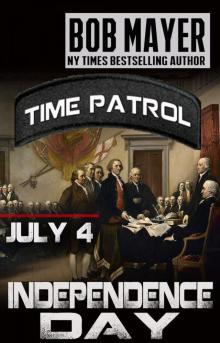 Independence Day
Independence Day Invasion
Invasion Chasing the Ghost
Chasing the Ghost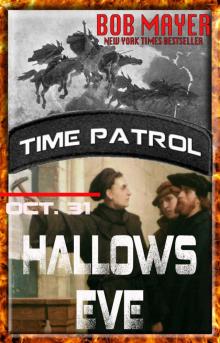 Hallows Eve
Hallows Eve New York Minute
New York Minute Valentines Day
Valentines Day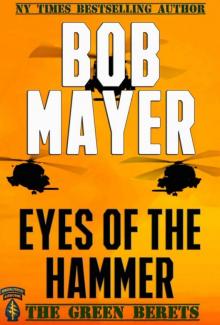 Eyes of the Hammer
Eyes of the Hammer Walk on the Wild Side
Walk on the Wild Side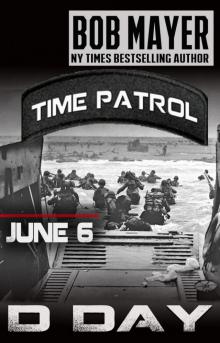 D-Day
D-Day Lawyers, Guns and Money
Lawyers, Guns and Money Z: The Final Countdown
Z: The Final Countdown Redemption: Area 51, #10
Redemption: Area 51, #10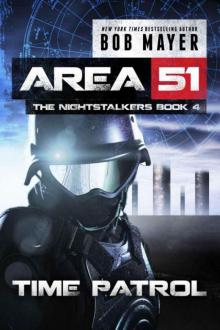 Time Patrol
Time Patrol Interstellar
Interstellar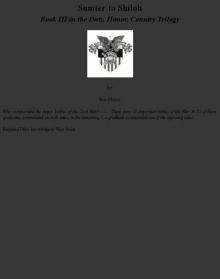 Sumter to Shiloh
Sumter to Shiloh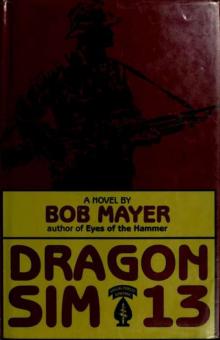 Dragon Sim-13
Dragon Sim-13 The Line
The Line Omega Missile (Shadow Warriors)
Omega Missile (Shadow Warriors) The Rift
The Rift The Jefferson Allegiance
The Jefferson Allegiance Project Aura
Project Aura Synbat
Synbat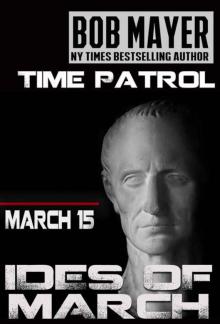 Ides of March (Time Patrol)
Ides of March (Time Patrol) Nightstalkers a5-10
Nightstalkers a5-10 Lost Girls tc-2
Lost Girls tc-2 West Point to Mexico
West Point to Mexico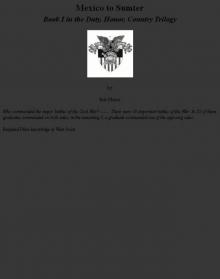 Mexico to Sumter
Mexico to Sumter Area 51_Invasion
Area 51_Invasion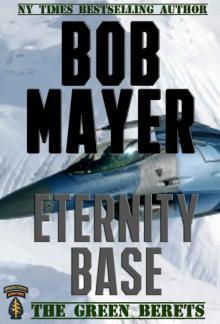 Eternity Base
Eternity Base The Line bo-2
The Line bo-2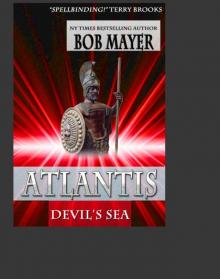 Atlantis Gate
Atlantis Gate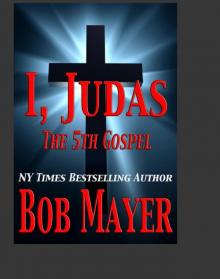 I, Judas
I, Judas Area 51_Redemption
Area 51_Redemption Bodyguard of Lies
Bodyguard of Lies Cut Out
Cut Out The Reply (Area 51 Series Book 2)
The Reply (Area 51 Series Book 2)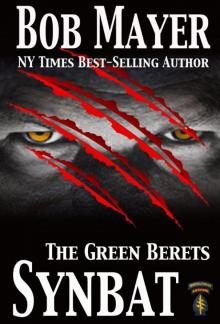 Synbat tgb-3
Synbat tgb-3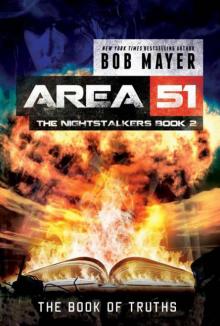 The Book of Truths a5tn-2
The Book of Truths a5tn-2 Eyes of the Hammer (The Green Beret Series)
Eyes of the Hammer (The Green Beret Series) The Gate
The Gate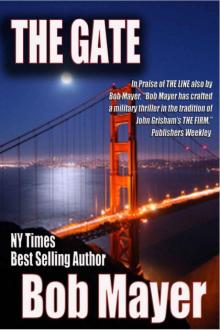 The Gate bo-1
The Gate bo-1 Synbat v5
Synbat v5 Omega Sanction
Omega Sanction Z
Z Chasing the Son
Chasing the Son Nightstalkers
Nightstalkers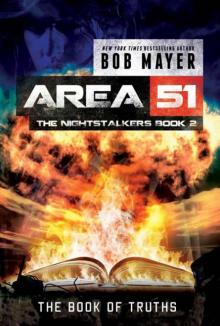 The Book of Truths
The Book of Truths Dragon Sim-13 tgb-2
Dragon Sim-13 tgb-2 Section 8
Section 8 Chasing the Ghost v5
Chasing the Ghost v5 Psychic Warrior
Psychic Warrior Chasing the Lost
Chasing the Lost The Kennedy Endeavor (Presidential Series Book 2)
The Kennedy Endeavor (Presidential Series Book 2)